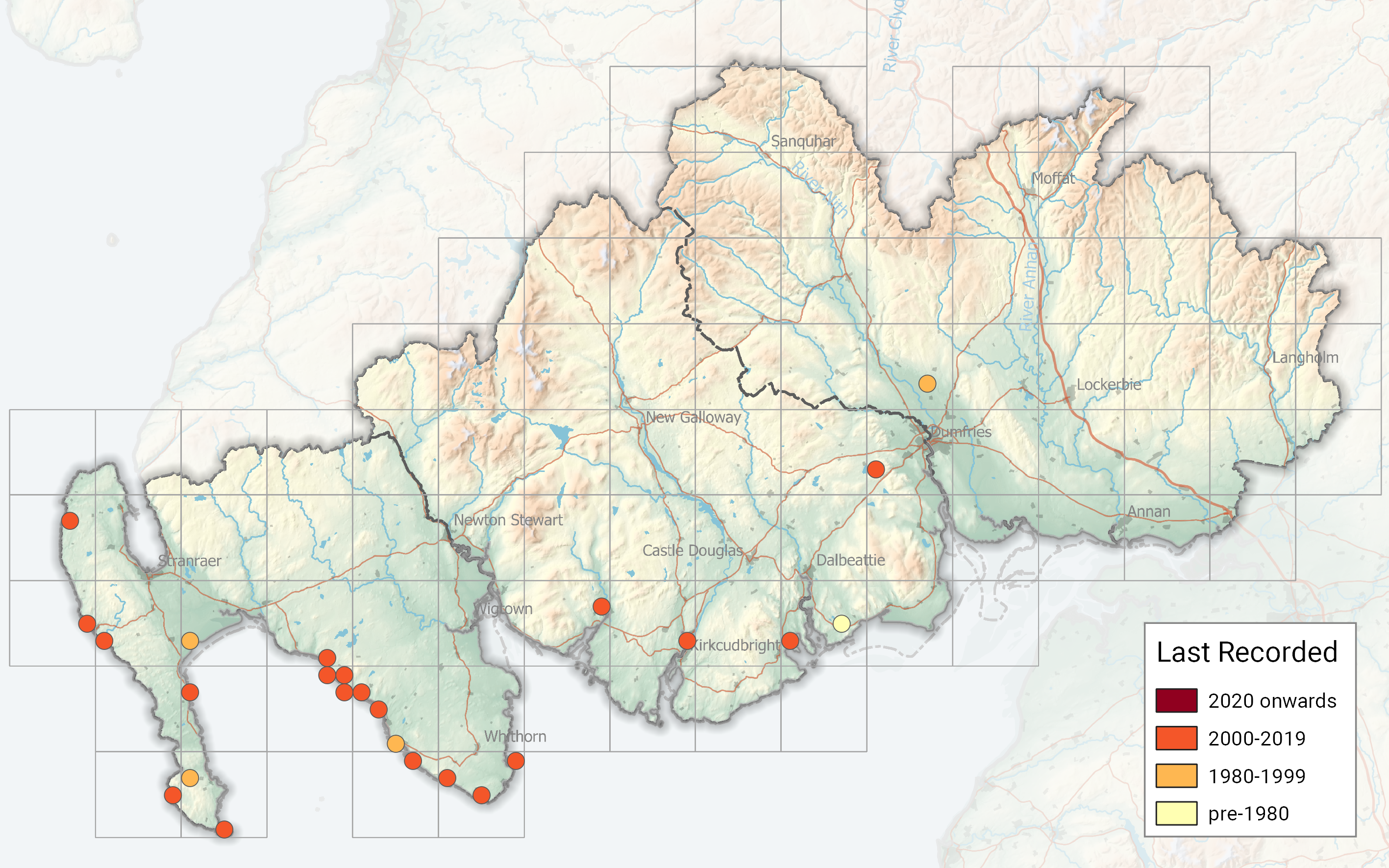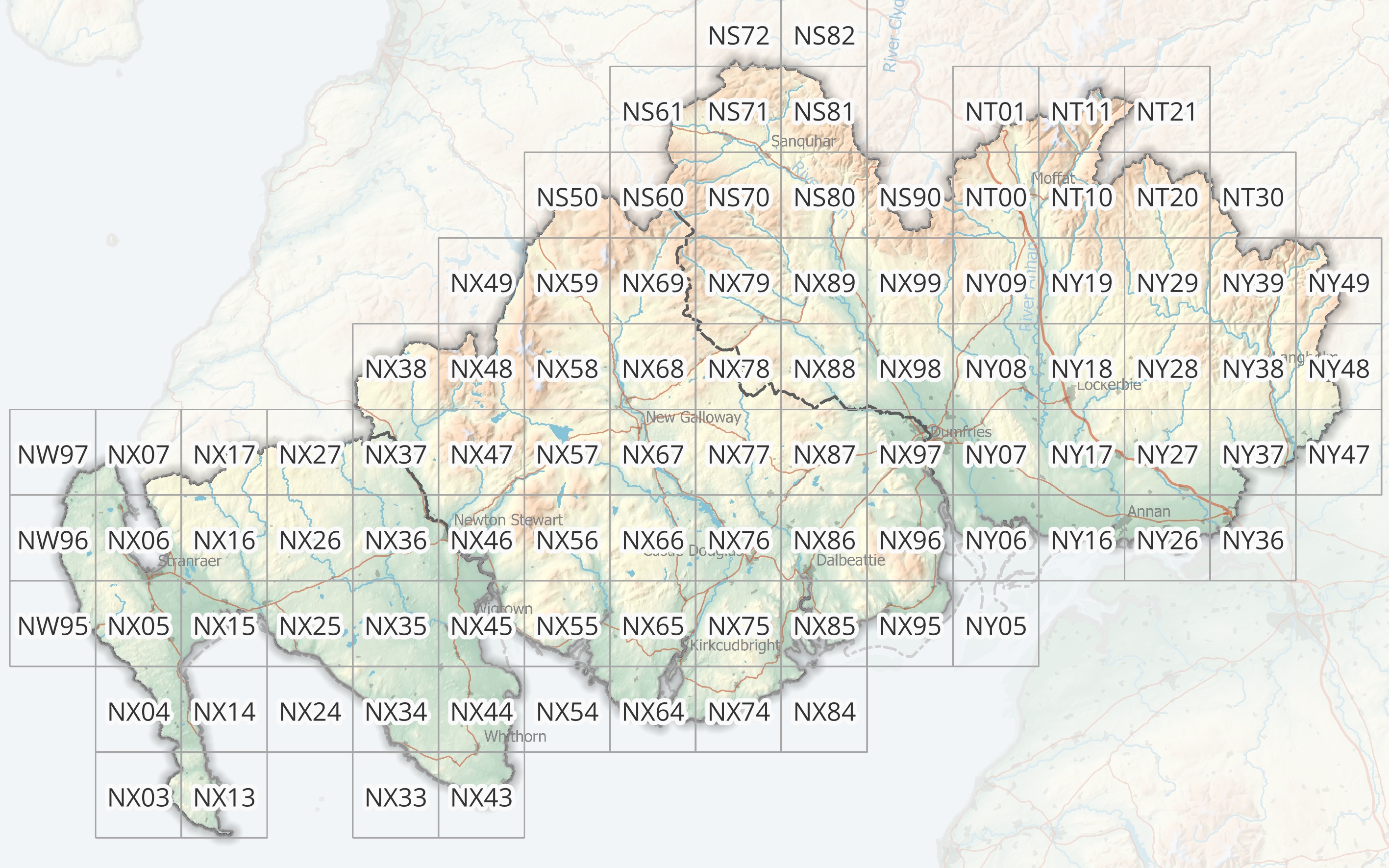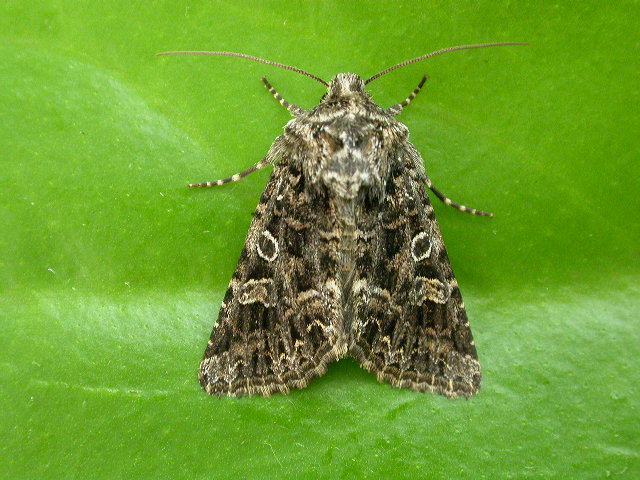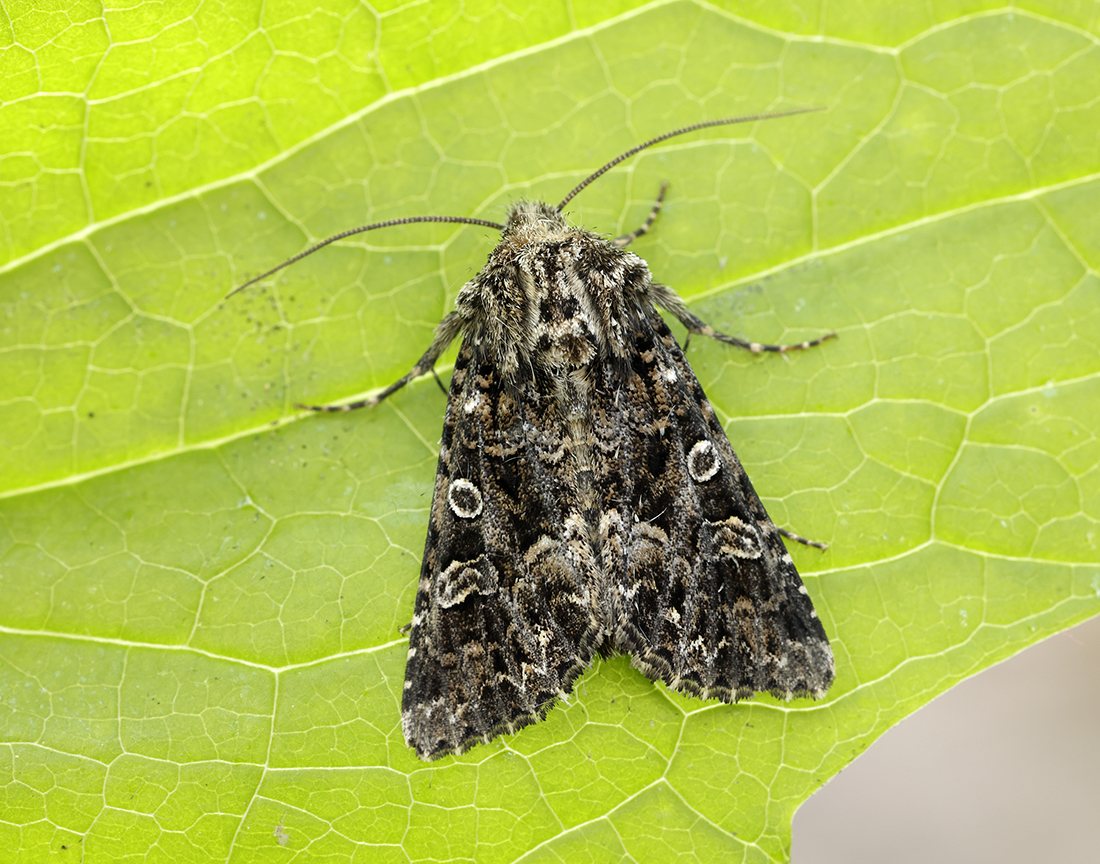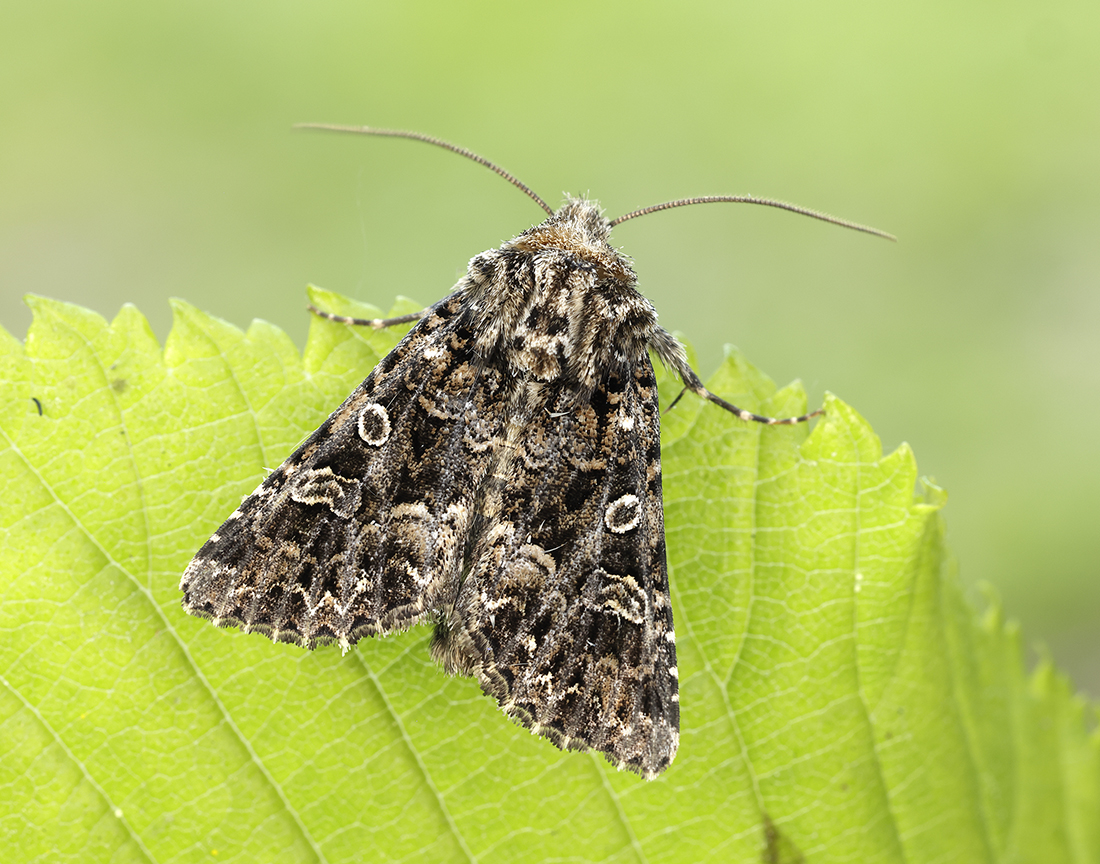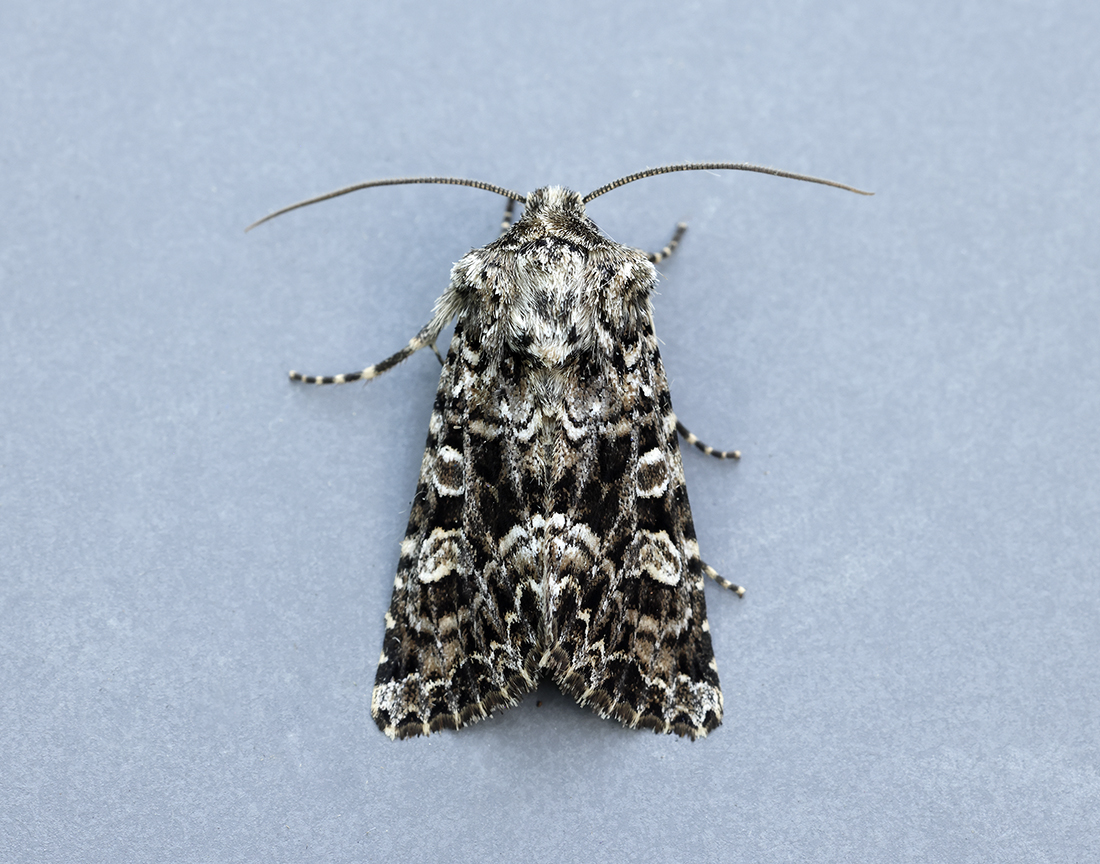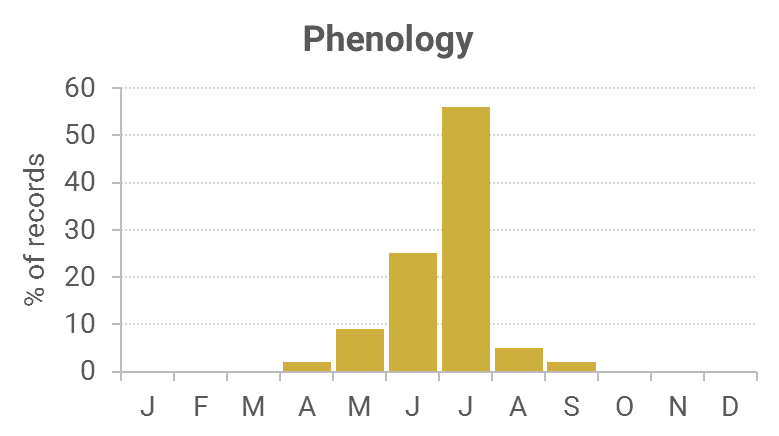Identification
Very variable but has a rather broad, angular and pointed forewing. Markings are well defined and include several arrowhead markings before the outer cross-line and a tooth-like mark centrally.
Recording Method.
Attracted to light, also comes to flowers.
Life cycle
One generation. Overwinters as a pupa in a cocoon underground. Larvae are present late June to August.
Larval foodplants
Bladder Campion, Nottingham Catchfly, Rock Sea-spurrey, Sea Campion and White Campion.
Habitat
Dry open sites like field margins and gardens, also coastal. Pod Lover likes rocky coastlines.
History
Waring et al. (2009) states that Tawny Shears just reaches southern Scotland, but most of our later records at least are closer to Pod Lover. One eminent lepidopterist treats it as just one species, there being no visual marks to determine to race, apart from darker colour.
Tawny Shears H. p. perplexa ([D & S], 1775)
Buchanan White of Perth (1895) listed it as occurring in Colvend and Southwick parishes (VC73). Gordon (1913) had found the larvae to be common in seed heads and flowers of Silene maritima on the beach below Alticry, Luce Bay, Wigtownshire, on 13th July 1906. One was captured at the Mull of Galloway Light on 26th July 1910.
It was 1972 before it was found again, this time at Portpatrick (VC74).
Subspecies Pod Lover H. p. capsophila (Duponchel, 1842)
Gordon (1913) under Dianthoecia capsophila was informed by Hugh McDowall that he had caught one at Portpatrick in 1886.
In 1994 the only Dumfriesshire record was trapped at Kirkton on 24th July. The only Kirkcudbrightshire records appeared in 2002 at Kirkcudbright and again in 2010 at Old Torr, the first since the 19th century. The rest of the records were from Wigtownshire during 1996 to 2003 at Dunskey, Clanyard, Garheugh, Philip and Mary, Port Kale, Barsalloch Point and Mull of Galloway.

